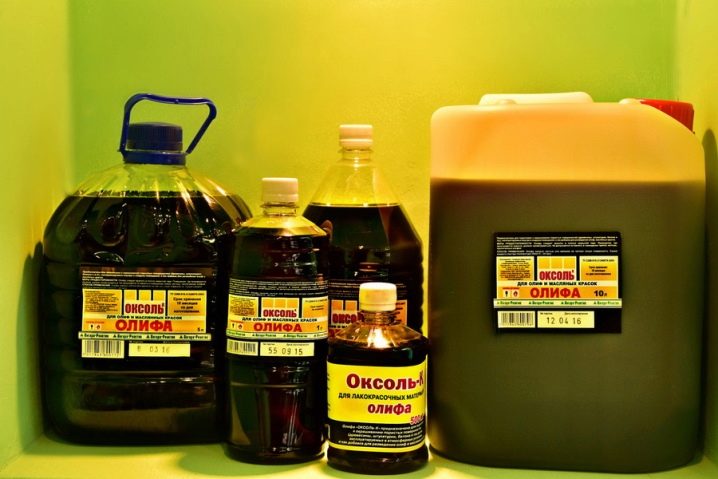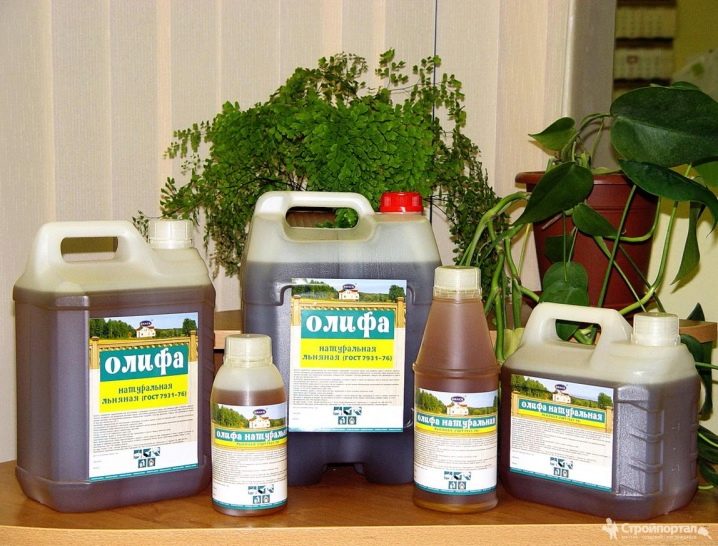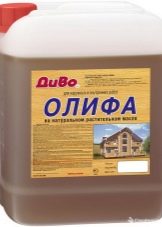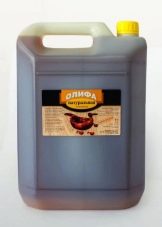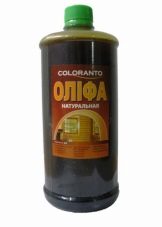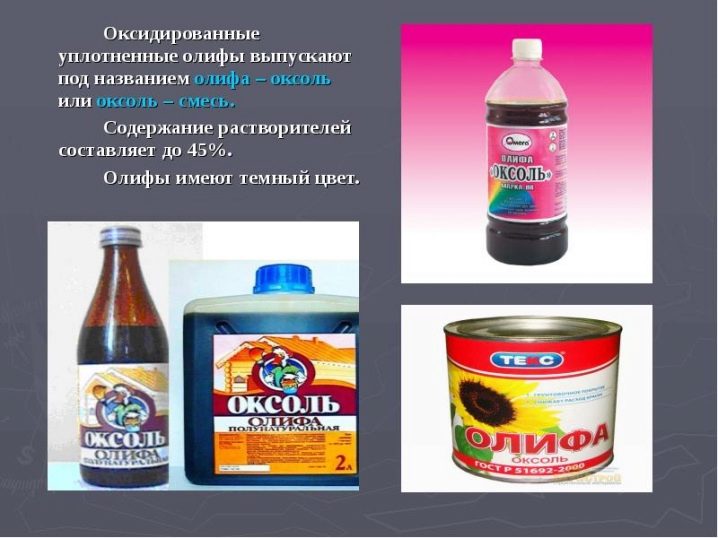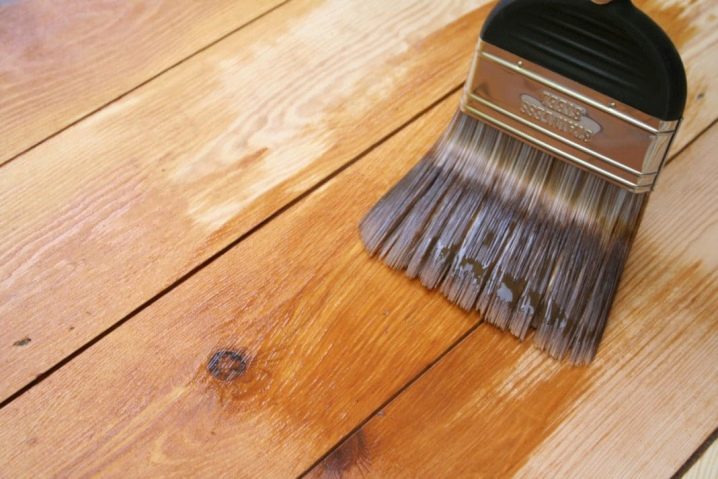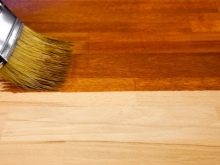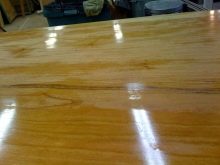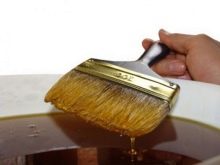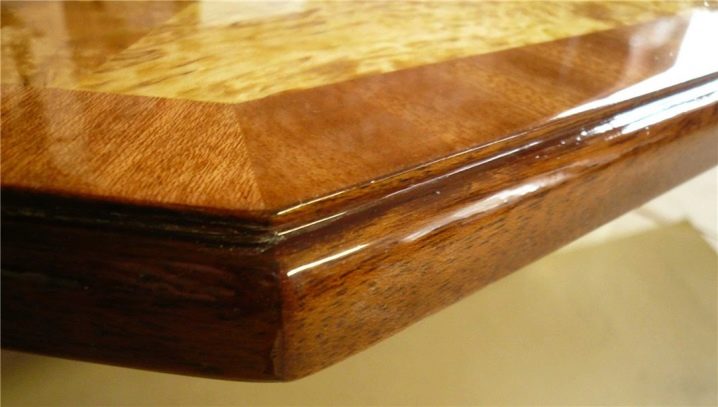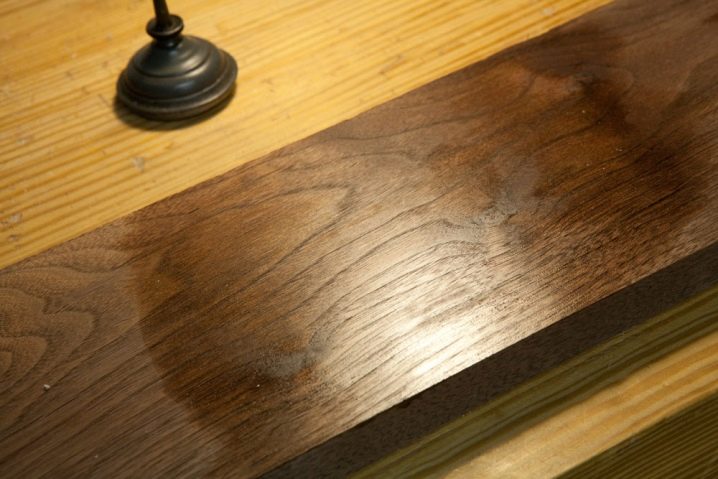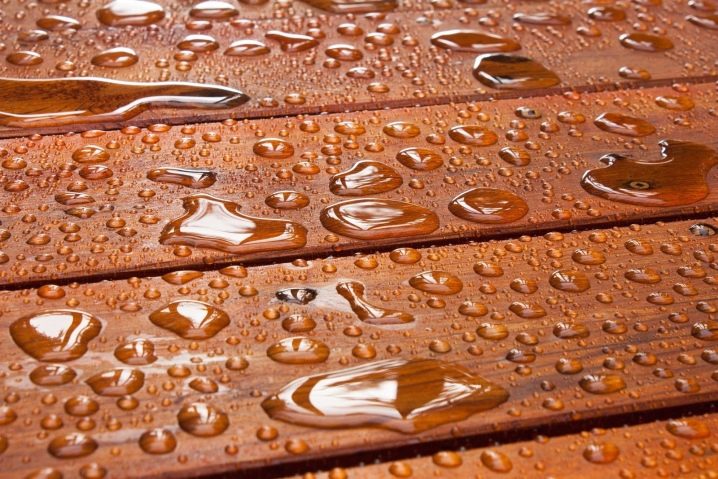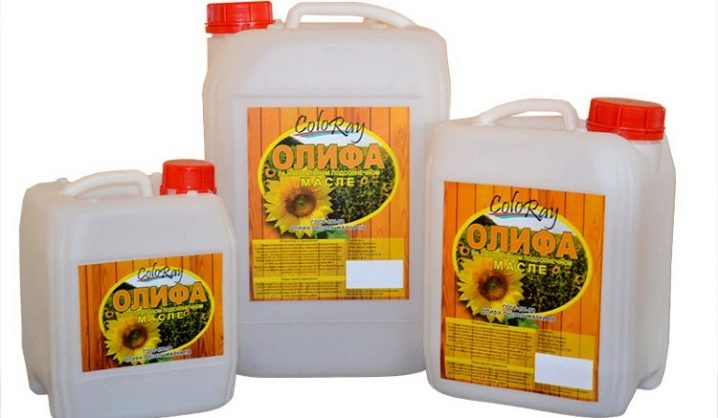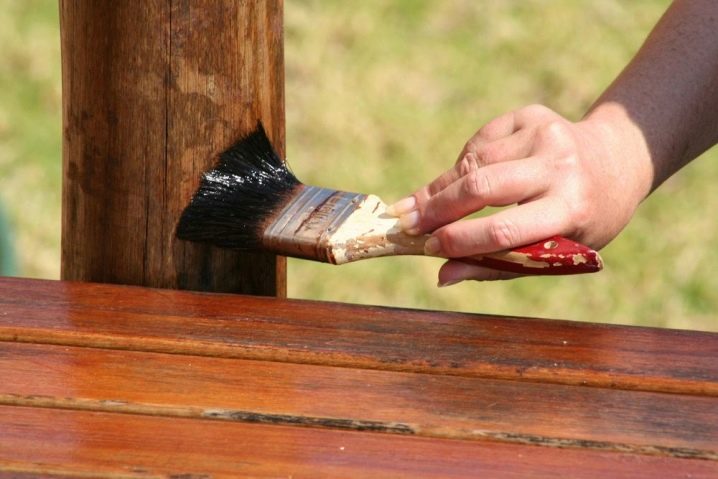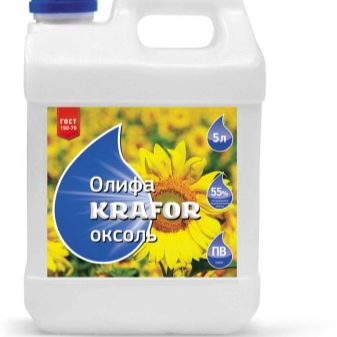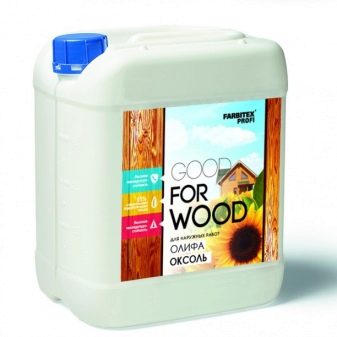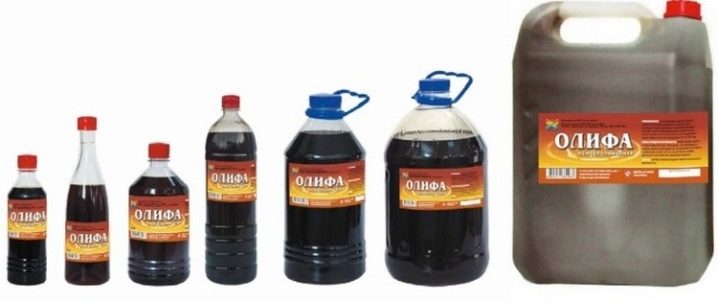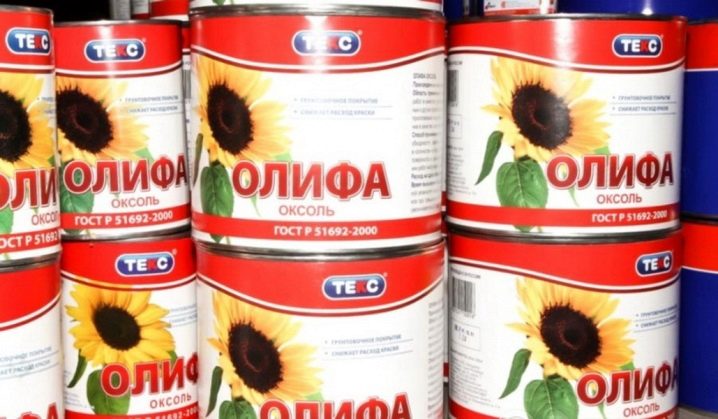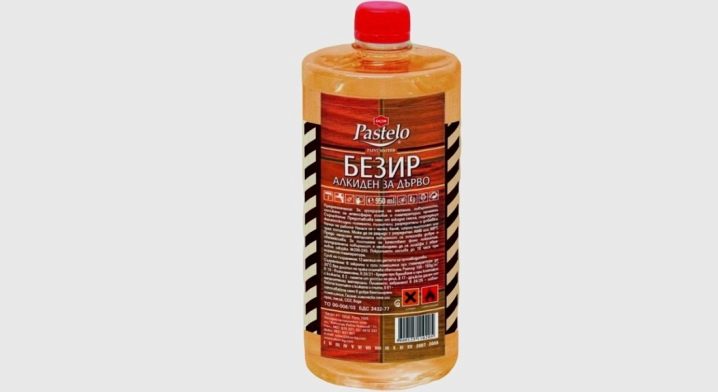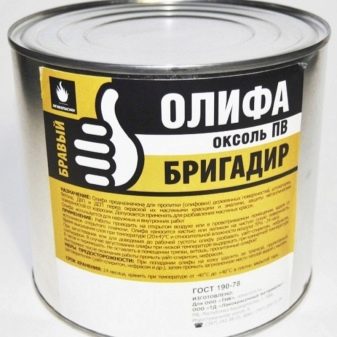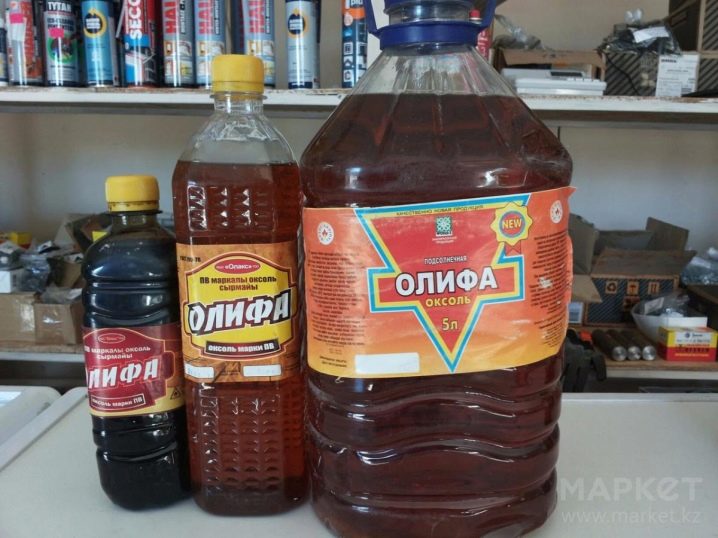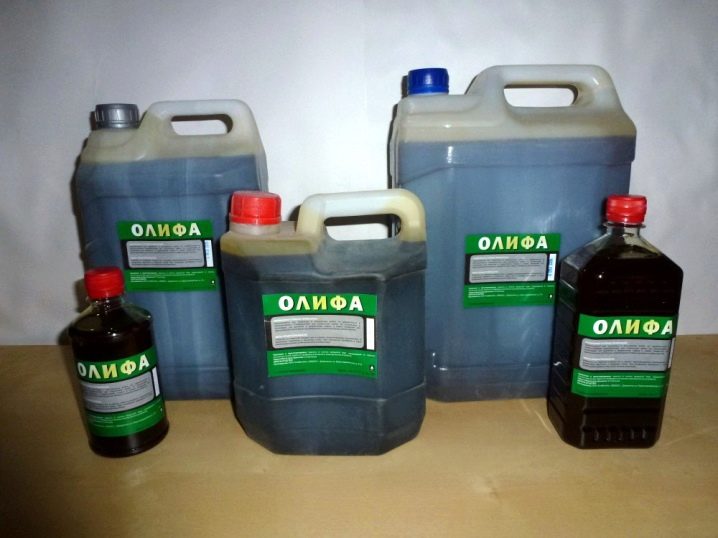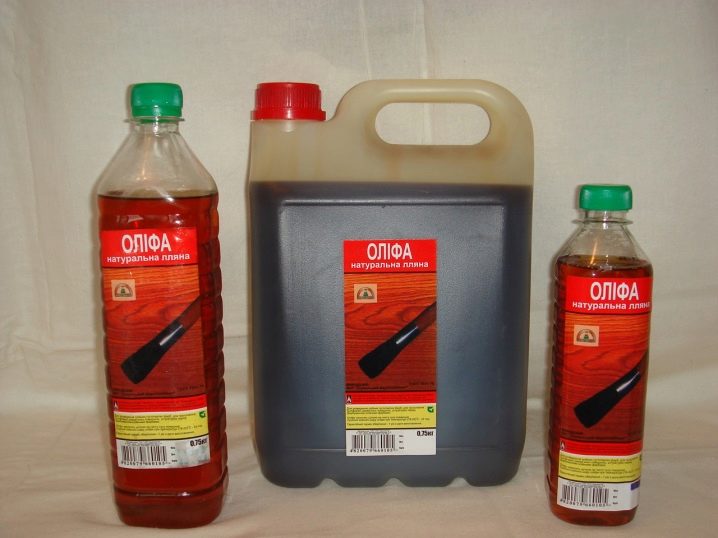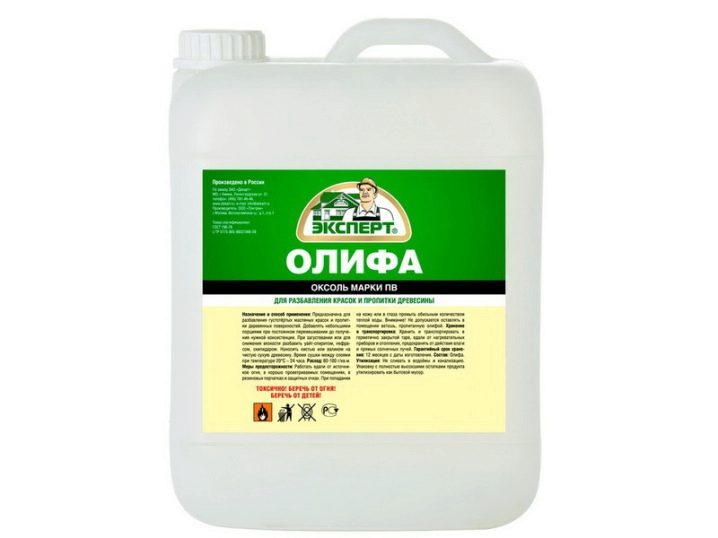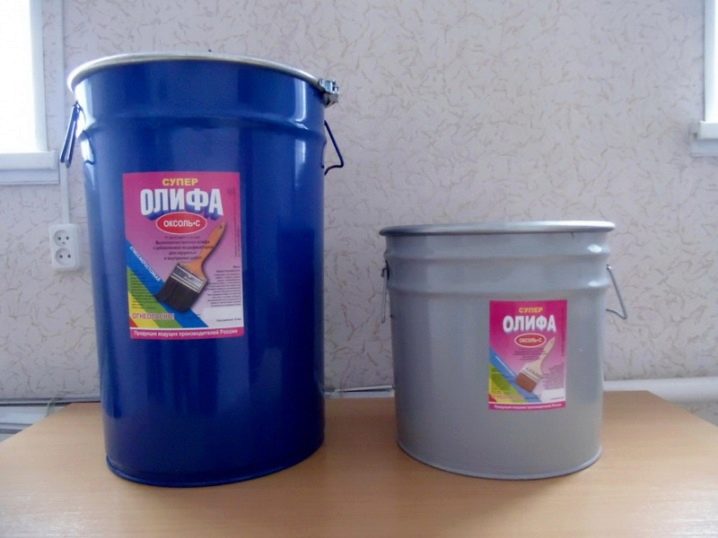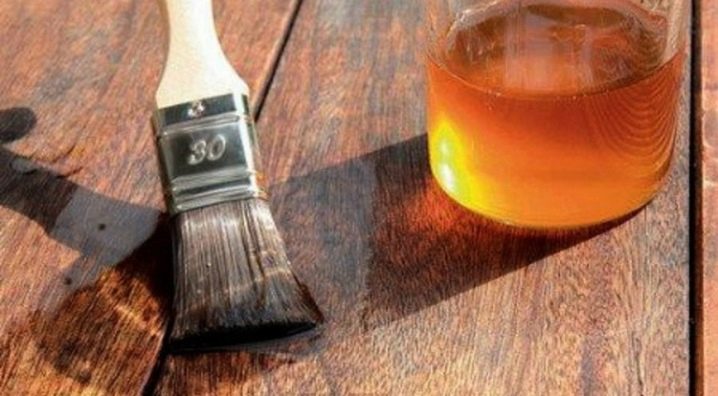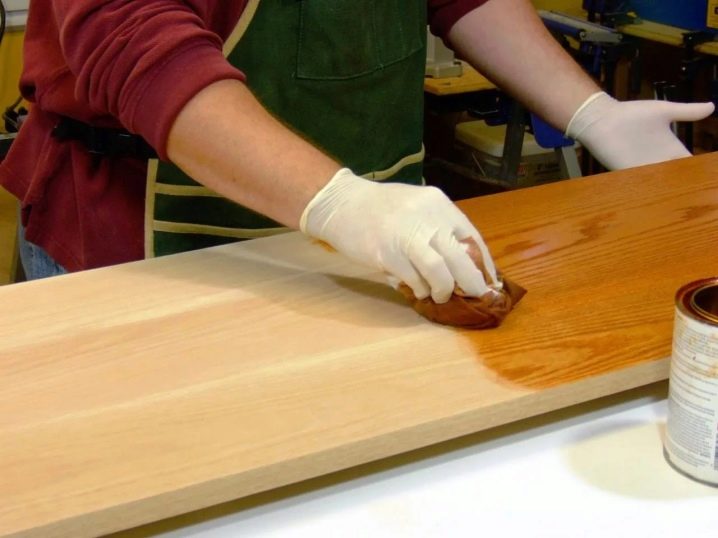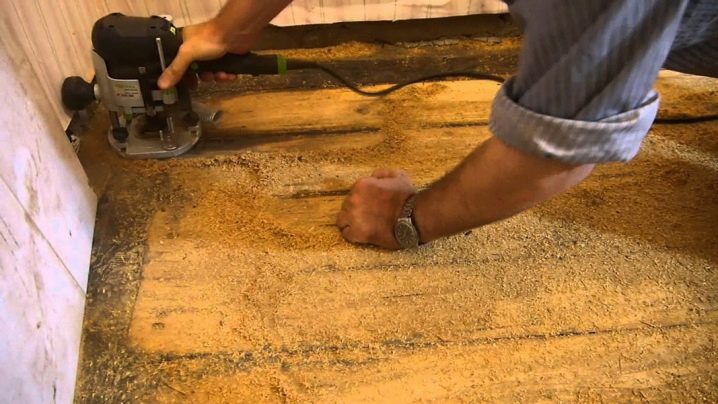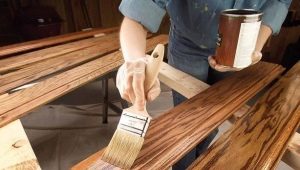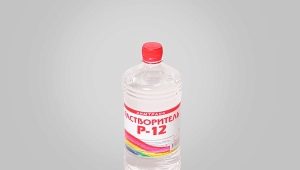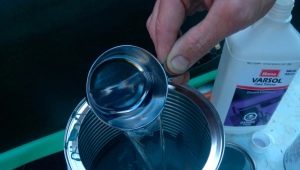Choose linseed oil "Oksol"
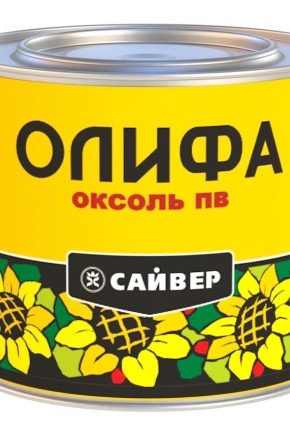
Some construction and repair work often uses materials such as wood. The tree has a porous structure and therefore needs more processing than others.
In order to protect this valuable and not quite cheap material, Oksol drying oil is used.
What it is?
Drying oil is a thick, oily liquid, predominantly brown in color, consisting of a mixture of different components, intended for painting wooden surfaces and preparing plastered surfaces for painting, and is also used as a solvent for oil paints.
Like any other product intended for processing, linseed oil consists of basic and auxiliary substances. The basis of the Oksol drying oil is a vegetable oil, the share of which is in the range of 54-55% of the total mass.
For the manufacture of the product can be used different oils: flaxseed, hemp, sunflower, grape, soybean, corn or camelina. The basis contains either one type or a mixture of several oils.
The share of additional components in the composition of Oksoli accounts for 45% of the total mass, of which 40% is occupied by a solvent (white spirit is most often used), and the remaining 5% is accounted for by dryers. Each of them has certain properties that affect the composition as a whole.
The solvent imparts the desired consistency to the varnish, and the dryers help to quickly dry the composition on the surface. Salts of different metals, and, more precisely, compounds of iron, cobalt, lead, lithium, strontium and many others with organic acids are called siccatives.
The composition of the drying oil is not accidental, it is thanks to him that a stable film-forming coating that reliably protects the tree from the penetration of parasites that destroy the wood structure and moisture, the impact of which leads to the processes of decay. It not only performs a protective function, thereby prolonging the service life of a wooden surface, but also helps to reduce the cost of paints and varnishes applied over the linseed paint.
The film formed on the surface does not allow paint or varnish to penetrate deep inside the wood structure, which means that less material is needed. In addition, the use of drying oil as a preparatory layer for dyeing can improve the adhesion of varnish or paint to wood surfaces.
In order to understand how and due to what the formation occurs on the surface of the film, it is necessary to consider the principle of the effect of drying oil, based on the properties of the components. Many types of vegetable oils used as a base, under certain conditions (oxygen, heat, light) can thicken, and when applied to the surface with a thin layer - cure (dry).
The formation of semi-solid mass occurs due to polyunsaturated fatty acids present in some oils of vegetable origin. The rate of hardening on the surface is in direct proportion to the amount of glycerides of unsaturated fatty acids and such an indicator as the iodine number. The greater the percentage of fatty acids in the composition of the oil and the higher the iodine value, the faster the polymerization process.
But the natural oxidation process is slow, and therefore the oil for drying oil is subjected to heat treatment along with added to the composition of the desiccants. Heating of this composition leads to the decomposition of substances that slow down the formation of the film, and due to the presence of metal salts, the oxidation process occurs faster.
Siccativas affect the composition not only in the drying process, but also after it. It lasts all the time while the layer remains on the surface, their share should not exceed 5%, a higher percentage of their content in the composition leads to darkeningand then the destruction of the film coating.
Formation on the surface of an elastic film occurs, as a rule, within 6-36 hours. Such a run-up time is due to many factors: composition, technology of preparation, the presence of additives. Virtually all currently known drying oils dry for about a day..
Kinds
Today, manufacturers produce several varieties of oil-based drying oil, differing in the presence of additional components and the percentage ratio of the main substances.
Natural drying oil is the basic basis for Oksoli., but differs from it in the percentage ratio of components and the absence of additional substances in the composition. The share of oil, most often it is flaxseed or hemp, accounts for 97%, and the remaining 3% are desiccants.
This type of drying oil is suitable for processing surfaces that are only indoors, in connection with which it is used infrequently, and the cost of this type is quite high due to the large percentage ratio of oil in the composition and its initial price.
Drying oil "Oksol" It is much cheaper than natural, because the share of oil in its composition is only 55%. But the reduced proportion of oil and solvent in the composition do not make this type of drying oil worse than natural. It is in no way inferior in its properties and appearance to a natural analog, and even surpasses it in some way.
Oksol can be used to coat wooden structures and plastered surfaces not only indoors, but also outside, which is its undoubted advantage.
On a surface treated with linseed oil sustainable coating with gloss effect is formed no later than a day. It differs in elasticity, water resistance and maximum in comparison with other types of durability.The only drawback of Oksoli is its harsh smell compared to its natural counterpart due to the presence of a solvent, which is most commonly used white spirit.
The division "Oksoli" on the brand due to the use in the composition of different oils that form the basis. For grade "B" is used either hemp or linseed oil. The best linseed oil is made on the basis of linseed oil., it forms the surface of a more durable coating.
The composition of the brand "PV" is based on other types of oils (soybean, sunflower, camelina, grape, corn).
The surface treated with the composition based on sunflower oil, has a lower resistance to various influences compared with the base of linseed oil.
Combined linseed oil unlike other types, it contains several types of oils that undergo various treatments. In particular, if the composition is added cheaper in cost and poorly drying rapeseed oil, then it is previously subjected to oxidation. This process is necessary so that the linseed oil with the cheaper oils used as the base comes close in properties to the original version.
The composition of the combined drying oil also includes synthetic substances and solvent. Such a liner is marked with the letter “K”, and the number following the letter indicates - for what types of work you can use the composition. Even numbers denote drying oils designed to treat surfaces indoors, and odd numbers denote compositions with which you can work outside.
Alkyd linseed oil has some similarities with Oksol. Vegetable oils are present in the composition of alkyd species, but their share is insignificant. This type of drying oil is made on the basis of alkyd resins, which are diluted with solvents, most often with white spirit. In addition, dryers are included.
Specifications
Drying oil "Oksol" is made according to GOST 190-78, in which the norms of various indicators for the grades "B" and "PV" are prescribed. There are eight basic standards, which determine the belonging of the varnish to a particular type.
They vary depending on the type of oil used and the brand of drying oil itself:
- The first color index in the table. For both brands, this value is identical, the color should be no darker than 800 mg J / cm ³ (according to the iodometric scale).But there are exceptions for the linseed oil, where camelina oil acts as a base (grade “PV”), this indicator has a different numerical expression. The color of such varnish should be no darker than 1800, and the varnish, made on the basis of soybean oil, this indicator 1100 J / cm ³.
- Conditional Viscosity Indicatorsmeasured with a viscometer, for the two brands differ slightly. For mark “B”, the time of drying out of drying oil through a funnel with a diameter of 4 mm (at t = 20 ° C) is within 18–22 seconds, and for grade “PV” it is within 19-25 seconds.
- Acid numberas measured in mg KOH / g for different brands. For grade “B”, this indicator should be no more than 6, and for grade “PV” it is slightly higher - 8. If sunflower oil is used as a base in the drying oil, which has an acid value in the range of 8-15 mg KOH / g, total acid number should not exceed 10.
- Mass fraction of nonvolatile substancesmeasured in% for both brands should be in the range of 54.5-55.5. If a petroleum resin resin is present in the mixture, the mass fraction of non-volatile substances can vary between 55-59%, provided that the viscosity index corresponds to the standards specified by GOST.
- Such indicators as sucks in volume and transparency both brands have the same values.Sludge by volume - 1%, transparency - complete. The flash point in a closed crucible for both brands shall not exceed 32 ° C.
- There is another important indicator characterizing drying oil. drying time. For grade “B”, a sustainable coating (to degree 3) is formed no later than 20 hours from the moment of application, and for grade “PV” - no later than 24 hours.
According to GOST 190-78, there are strict requirements prescribing in which container the varnish can be poured, at what temperature it is safe to store the liquid and what precautions to take when opening a can with the composition. All safety requirements are detailed in this document.
When buying linens from sellers must necessarily be a certificate of quality.
Consumption per 1m²
There are norms of consumption of linseed oil for 1 m². As a rule, these figures are not very different from the consumption of oil paints. It will take from 80 to 130 g to apply the varnish in one layer per 1 m². This run is determined by such factors as the type of surface to be treated (wood or plaster), the porosity and hardness of the material, the type of mortar, and the effects of temperature and humidity.
For fresh wood, consumption can be increased to 200, and in some cases up to 250 g per 1 m². According to some sources, the average consumption of drying oil for a single-layer coating varies between 150-200 g per 1 m².
Application
Before using the Oksol drying oil it is necessary to take some precautionary measures, since this composition is a toxic and flammable liquid.
- Painting works on surfaces should be carried out in special clothes, gloves should be used to protect the skin of the hands, and respirators are best protected by respiratory organs. But sometimes it happens that while working with linseed oil, the composition gets on the skin. To prevent flaking, reddening and ulcer ulceration of the skin, it is necessary to remove the composition as soon as possible with a soft cloth, previously soaked in vegetable oil. Then you should thoroughly wash the place on the skin, first with a soap solution, and then with plain water.
- The preparatory stage includes measures to protect the premises in which the work is carried out. First of all, care must be taken to ventilate the room and protect against accidental explosion of electrical appliances and light sources.In addition, you need to take into account the optimal indicators of the microclimate of the room. The temperature should not be lower than 15-18 ° С, and the humidity should not exceed 75-80%.
- You need to prepare the surface itself: clean it from dirt, grease stains, if any, sand, and then remove small particles from the surface. It is important to remember that it is impossible to paint floors with Oksol linseed, it is intended only for surfaces that are not exposed to daily mechanical stress.
- Before applying the composition must be thoroughly mixed. If the bank with linseed oil has already been opened, and the composition has thickened slightly, then it is possible to dilute it with a solvent to obtain a more liquid consistency.
- Apply the composition to the surface with a brush or roller in an even thin layer. Repeated application is possible only after complete drying of the first layer.
To learn how to use drying oil, see the next video.
